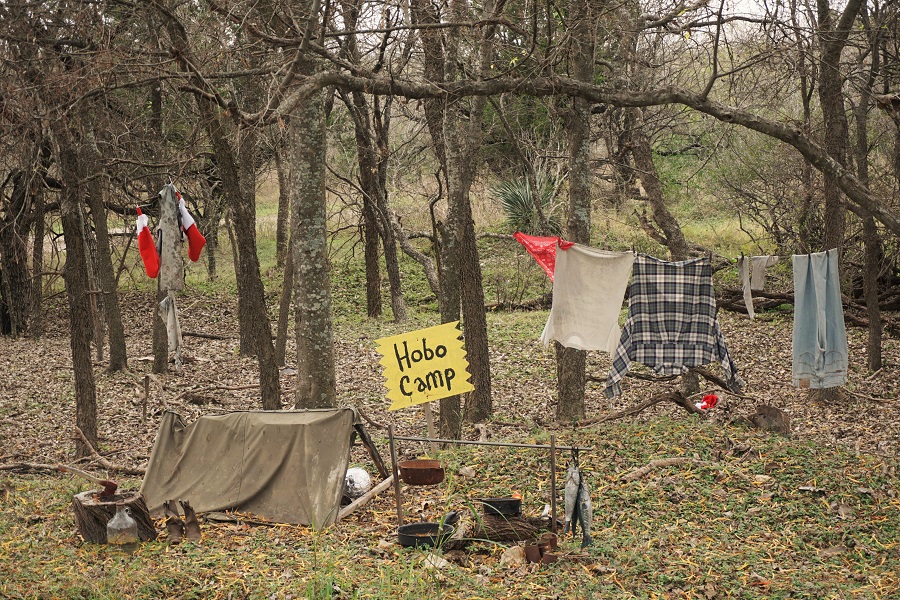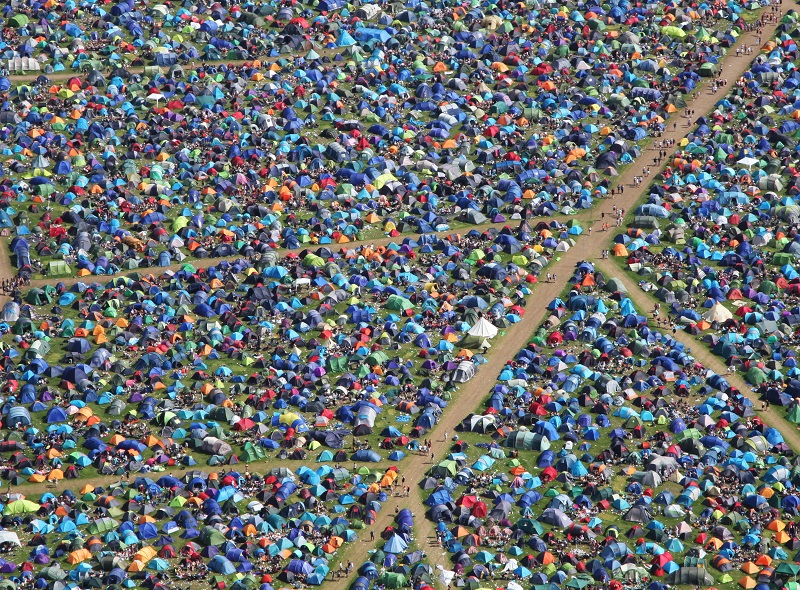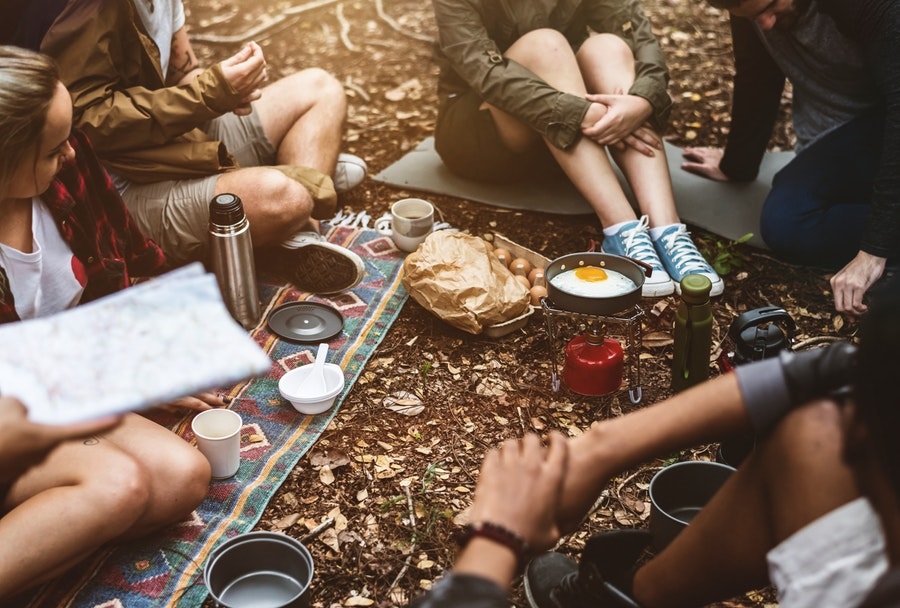Camping is usually something most people do on the weekends. If you’re car camping for one or two nights then you will more than likely just take clothes that will suit your needs and something warm, just in case it gets cold a night. You probably won’t spend much time thinking about what you need.
When dispersed camping you will probably just take a few extra layers in case it gets cold or wet. This may come as a bit of a shock to some of you, but you don’t have to change your clothes every day.
When you’re camping, as long as your clothes are dry and warm then they are doing their job well. That being said, if you spent a lot of time hiking and sweating into your clothes then you may want to freshen up.
When camping for extended periods of time you have to take extra clothing. Before we look at what to pack for extended camping trips, let’s first look a what is appropriate for a short camp. You will be able to add to this as your intended duration increases.
Starter Clothing list
- Moisture wicking base layer. Underwear and T-shirt
Try to use moisture wicking materials next to your skin. This will draw sweat away from your skin and will dry quicker. Wearing synthetic materials will help reduce chafing and the feeling of soggy clothing next to your skin that you get from cotton rich materials.
- Long sleeve tops.
Even when it is warm. You may need it to protect yourself from the sun and/or bugs.
- Quick drying shorts or pants.
As mentioned above you will want you clothes to dry a quickly as possible so the don’t get uncomfortable.
- A light jacket or sweater.
It will always get cooler in the evening so be prepared.
- Synthetic or wool socks.
Again, these will dry quicker keeping your feet comfortable. Exactly what you need after spending all day in hiking boots
These are the basics and are obviously depending on good weather. If you are expecting wind, rain and cold weather then you will need rain coats, hats, waterproof pants, long underwear, thermal vest and maybe a buff.
Expect the worse and you will always have all you need.
Extended camping advice
I don’t like to create checklists for clothing for extended camping trips as there are so many different scenarios such as weather, terrain and activities. This will be a personal choice between comfort and the amount of gear you are willing to take.
It is easy to overpack so here are a few things you should consider when choosing what clothing you take with you. Obviously, I don’t take into consideration what activity you will be doing. The advise below is just for your every day clothes.
Be sure to check the long range weather forecast and pack appropriately.
Camping for 3 – 7 days
When camping for three to seven days you will need at least one complete change of clothes. That doesn’t mean you wear one set of clothes for 4 days and the next for 3. I don’t even think the bears would be your friend if you did that.
Wash your clothes in rivers and hang them out to dry. You can change into your other set of clothes while you do this.
Don’t use detergent as it will harm the wildlife. Simply dunk your clothing into the water and rub the it together. Wring the water out and hang it up to dry. If you have no line then use bushes or branches.
You are just trying to rince out your sweat here, not clean off any stains. You could rub your clothing on a rock to try to remove some stubborn stains but don’t do this with cotton of any other soft material. Doing this will just create holes.
Outer layers such as jackets, hats and even sweaters don’t need to be washed within the seven days. Just things that are next to your skin.
I also pack a warm lightweight long sleeve sweater and long thermal bottoms for sleeping in. You can give these a wash too half way though your camp, but make sure the weather is good enough so that they dry in time for bed.
Camping for 7 – 30 days
Ok, so you want to spent a few weeks camping. I spent 3 months camping in Spain when I was younger. It was all in campgrounds. I have never dispersed camped for any longer than seven day so my advice here would be what I think I would do, not what I have done.
For campgrounds, it’s actually pretty easy. Especially if you are not planning on moving around much. I was able to work, go to restaurants and bars, all the things you could do if you were staying in an apartment.
I think I had about 5 different sets of clothes but even that was overkill. The weather was so good that I spent most of my time in swimming shorts. Most campgrounds have washing facilities. If not a machine then a sink where you can use detergent and scrub by hand. We even bought a tent wardrobe to hang our good clothes in.
Dispersed camping for this amount of time will be slightly trickier. For starters all of your outer layers will want to be hard wearing. You won’t have the luxury of getting stuff from the car so you will want to pack light.
I would follow the washing schedule I talked about for the three to seven days but you will need at least another set of clothing along with what you have on you. So thats 4 altogether.
Unless you intend on going completely off grid for a few weeks you will want some good clothing so that you can go out in a nearby town without looking like a hobo.
Carry your clothing in separate water-tight bags. I would have 3. One for clean, One for dirty(to be washed) and one for good clothing. You don’t have to go overboard here. Just a light shirt and pants will do the trick.
I usually have a light per of black trainers that I wear around my campsite once it is reset up. A quick scrub and these could easily be used as part of my “good clothes”
Camping forever
You have decided that enough was enough and to take the leap and leave all the unreasonable home repayments behind. This can be done but I suggest staying in the one place and preferably a campground, especially during the winter months. By setting a permanent camp you will be able to get into a routine and see what you need.
There are some regulations regarding the the length of time you’re allowed to stay in the one place and this will differ between public and private campgrounds. I have created a post explaining the differance between private and public campgrounds here.
Your clothing for a permanent camp will see you say bye bye to a lot of your current clothing. Clothing will be chosen for function over fashion from now on.
You will also need to have somewhere to store your winter stuff in the summer and your summer stuff during the winter. Add to this certain activities that you will be doing and you will see that it is impossible for me to tell you exactly what you need.
But I do give this advice. Start small. Take enough clothing that will do you for one month and then buy more as you need it. As things wear out, dump them and replace them. Don’t hang on to thing you don’t need.
You want to take a minimalist approach to your clothing or they will quickly pile up. This may not be a problem if you are staying in the same campground permanently but if you want to move around then you will have issues.
I hope this information was able to at least guide you in the right direction. Extended camping takes commitment but you don’t have to give up all of your luxuries. With a bit of planning and some adjustments to your kit you will be able to camp anywhere for any amount of time.
If you have found this article helpful then please remember to share by clicking on one of the buttons below. It will help others find this article too.
Links from the post above;
Find out the difference between private and publc campground here



